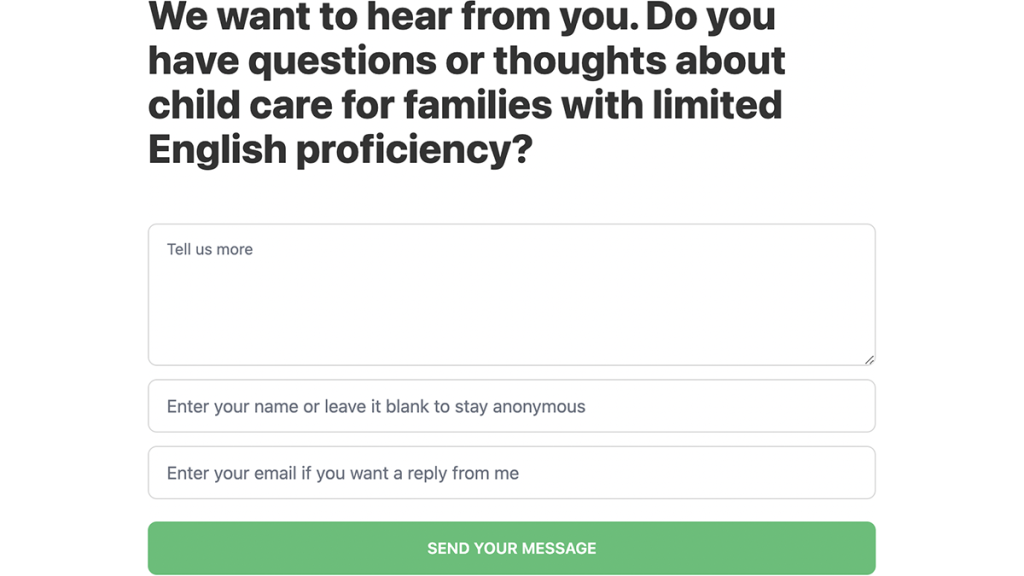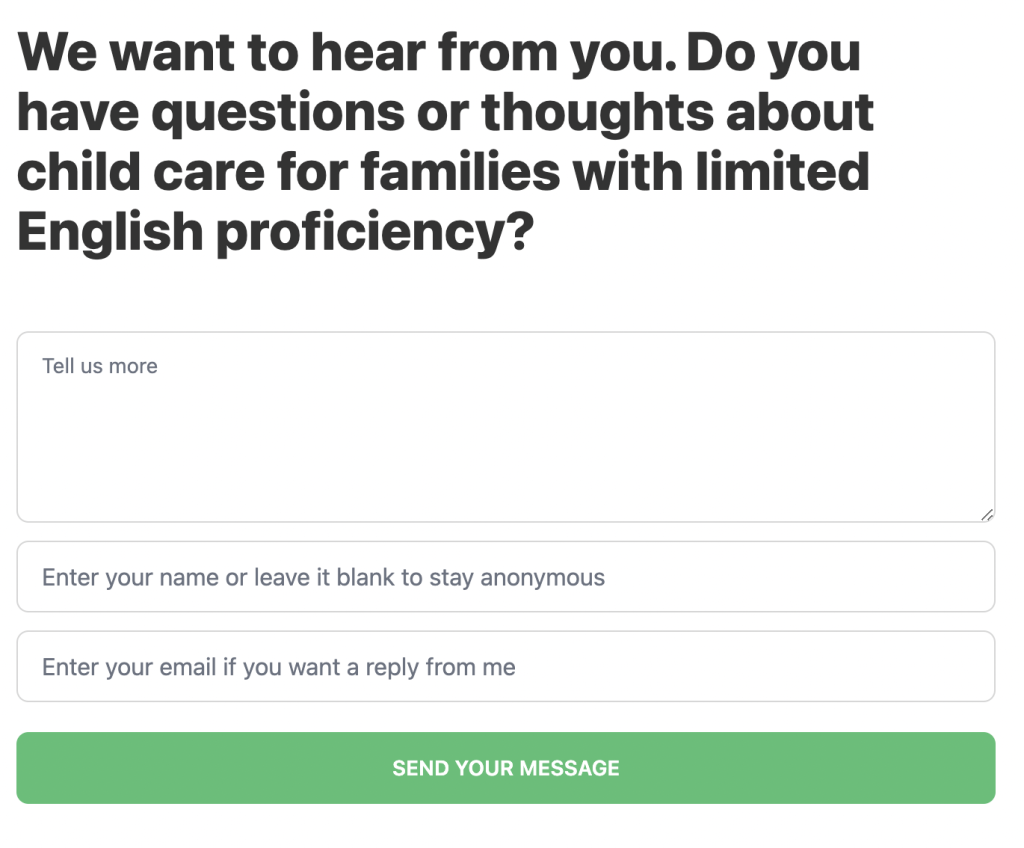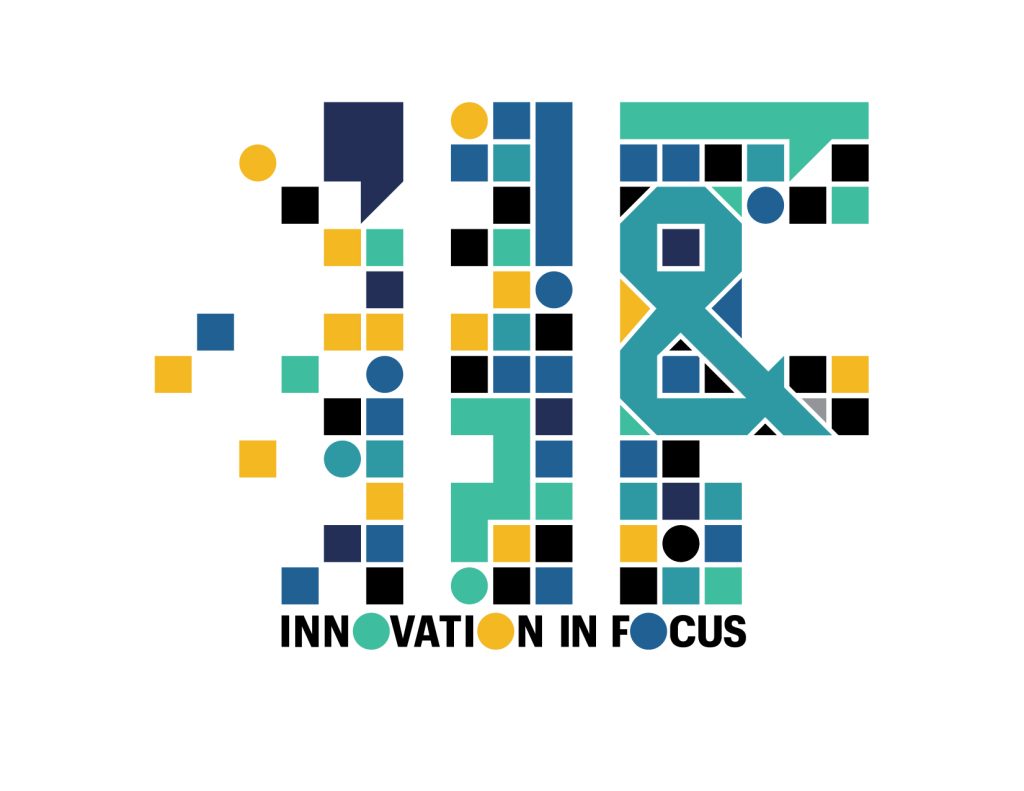
How to create targeted service journalism from listening efforts
Integrating solutions journalism into post-publication engagement
Scout Hudson is a 2024 RJI Student Innovation Fellow partnered with The Hechinger Report. The RJI Student Fellows will be sharing their innovative work throughout the summer in Innovation in Focus.
The Hechinger Report in partnership with palabra. and AL.com, published “A small rural town needed more Spanish-language child care. Here’s what it took.” It chronicles how Lexington, Neb. worked to address the growing disparity between Hispanic residents and Spanish-language child care.
After publication, we circled back with key players from Lexington to look deeper at the issues at play — and how we can continue to engage on this issue even after the article is done.
1. Survey local institutions
We researched what organizations are involved in advocating for Nebraska’s Latino community or families using child care. These organizations ranged from family foundations and councils for refugees and immigrants to enterprise funds and community support groups.
We also looked at what Spanish-language news mediums were already at play, such as Buenos Días Nebraska and El Perico. It is important to understand how your target audience is already finding information and news. This could be a local newspaper or radio station, or it could be a WhatsApp channel or Facebook page.
Examine how these institutions are communicating with your audience. In your newsroom’s attempt to reach that audience, consider how these institutions already fulfill or attempt to fulfill the needs you’ve identified. Acknowledge the function of these spaces and respect their utility and their autonomy. Consider the web of trust and community that may be integral to these institutions before asserting your newsroom’s engagement team into these spaces.
2. Listen
We arranged Zoom calls to meet with some of the key institutions, many of which were fellow nonprofits. Here are some of the questions we asked to learn more about the informational needs of our target audience:
- In your perspective, what barriers to childcare are the largest in Nebraska? Do you see cultural differences exacerbating these barriers?
- What informational gaps do you or your clients have? How are these gaps currently being addressed? Which are the most difficult to address given the resources already in place?
- What distinguishes informational gaps in your community from informational gaps in your city, state or the U.S.?
- How could a newsroom work to fill those gaps?
The final question — “how could a newsroom work to fill those gaps?” — may seem terse, but it sparked substantive and imaginative responses. This question recenters journalism as an industry of service and can empower audiences to remember that the news exists for them.
Sources could express their information needs more clearly through this framework of service.
3. Evaluate feedback
Before the listening sessions, we were inspired to do a form of direct postal engagement. Our plan was to do a targeted mail campaign of postcards with steps on how to begin the child care licensing process. We planned to send these to Nebraska counties with high populations of Hispanic residents, which we would obtain via the U.S. Census records.
However, after speaking to the communities at the center of this story and larger issue, we learned that the information gap is shadowed by a larger access gap. Even if residents knew how to access the licensing process – specifications for citizenship and English-proficiency would continue to bar many residents from completing the licensing process. Additionally, nonprofits in the Lexington area have established and sustained methods of outreach to Hispanic and Latino communities.
We learned that we were better suited to address the informational gaps that exist for individuals working to make the process more accessible.
4. Begin building
We ultimately decided to tailor our product, a solutions-oriented explainer, to the needs of professionals working in the nonprofit sector, advocates and policymakers — an audience we understood to be established readers of The Hechinger Report. In our meetings with nonprofits we learned they had questions about how advocates are using federal policy at the state level to promote a Spanish-speaking child care workforce. They wanted to see examples of what was working elsewhere.
We placed a call-out in the Early Childhood Newsletter. With just over 12,000 subscribers, the EC newsletter is not the largest newsletter, but the audience tends to be highly engaged.

We already understood our core audience to be in-the-know about early education policy. A survey of the Early Childhood Newsletter conducted this spring revealed that many of our readers work in nonprofits, research early childhood or are early childhood educators themselves.
By discovering source needs through direct dialogue, then broadening the conversation by inviting some of our most engaged readers to contribute, we wanted to build a product that felt authentic and useful to both parties.
We planned to pull from the responses to build the framework of the explainer. Ideally, questions submitted from the audience would guide the content of the piece.
Or at least that was the goal — we did not receive any write-ins. Instead of viewing this as a failure, we decided to pivot. We reached back out to the involved nonprofits and asked them specifically what they wanted to see. We used this new strategy to outline the explainer.
5. Continue service
In our conversations during the listening stage, nonprofits expressed that they wish they had a way to communicate with each other directly. To address this need, we are planning to facilitate a webinar about the accessibility gaps in Spanish-language child care.

Sign up for the Innovation in Focus Newsletter to get our articles, tips, guides and more in your inbox each month!
Cite this article
Hudson, Scout (2024, Aug. 20). How to create targeted service journalism from listening efforts. Reynolds Journalism Institute. Retrieved from: https://rjionline.org/news/how-to-create-targeted-service-journalism-from-listening-efforts/
